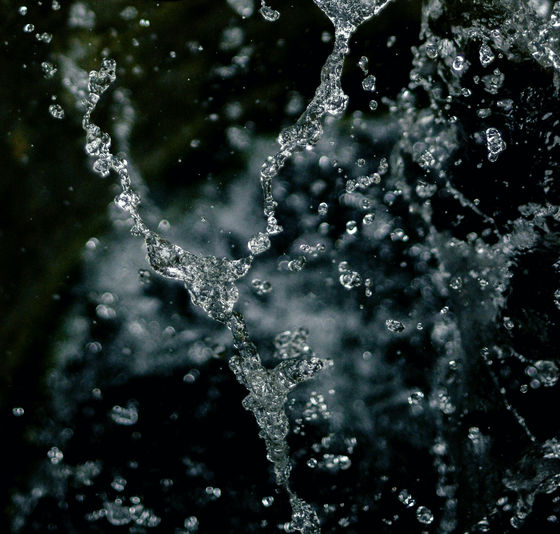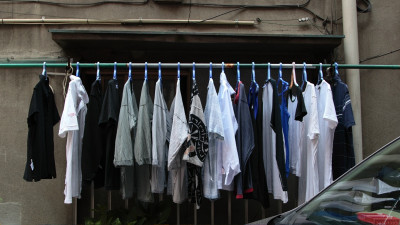A urinal is designed that is physically the least likely to cause urine to bounce back.

When men urinate in a urinal, urine splashes back and stains their pants and shoes, which is a constant problem for men. To solve this problem, scientists at the University of Waterloo in Canada have come up with a urinal design that minimizes urine splashing.
Physicists have designed a urinal that reduces dramatic splashback | New Scientist
What's the best design for splash-free urinal? Physics now has the answer | Ars Technica
https://arstechnica.com/science/2022/11/the-angle-at-which-dogs-pee-inspired-optimal-design-for-splash-free-urinal/
The urinal designed to minimize the amount of urine splashing is an elongated porcelain urinal with a curve reminiscent of a nautilus shell, and is called ``Nauti-loo''.

Kaveeshan Thurairajah, a graduate student at the University of Waterloo who was involved in the design of Nautiloo, said, ``I think most men have gotten pee on their pants because they were careless when urinating.'' I came up with the idea of building a urinal with very few people.' The urinal developed by Thurairajah et al. with less urine splashing was announced at the American Physical Society Conference on Fluid Dynamics held on November 22, 2022.
Zhao Pan of the University of Waterloo, who was involved in the development of Nautiloo, is a former student of Tad Truscott, founder of Utah State University's Splash Lab , which studies urine splash. According to Splash Lab, it has been demonstrated that it is important to 'get closer to the urinal' and 'reduce the angle of collision between the urine and the urinal' to reduce urine splashing.
By watching the video below, you can see how important it is to reduce the angle of collision between urine and the urinal in order to reduce splashback.
Urinal Dynamics: a tactical summary - YouTube
Another of Truscott's students, Randy Hurd, also introduced a urinal insert in 2015 designed to reduce urine splashing. One of the inserts Hurd announced uses 'absorbent fabric to minimize urine splashback,' a second uses a honeycomb structure, and a third uses pillars. It is characterized by an array of
Hurd's insert design was inspired by Syntrichia caninervis , a type of superabsorbent moss that excels at collecting and storing as much water as possible in extremely dry regions. . Hurd et al. designed the insert structure based on the structural similarities between an artificial material called `` VantaBlack '' and Syntrichia caninervis, and succeeded in minimizing urine splashing.
According to Pan, the key to Nautiloo's design is the angle at which the urine stream hits the porcelain, or urinal, surface. This is based on Splash Lab's empirical results that ``reducing the angle of collision between urine and the urinal reduces splashback.''

Mr. Pan and his research team created a computer model and found that the ``optimal angle between urine and toilet bowl'' for humans is 30 degrees. Next, by preparing urinals of various shapes and spraying dye at various speeds, we verified how much the dye would bounce back. The amount of urine that bounced back was then quantified by wiping off the splashed staining solution with a paper towel and comparing the weight with the original dry paper towel.
Next, the research team envisioned a urinal (second from the right) with a curved structure similar to a nautilus shell, rather than the usual rectangular structure, so that men of all heights could minimize urine splashing. . The research team created a prototype of this nautilus-shaped urinal to simulate the flow of urine. As a result, regular urinals have been proven to bounce 50 times more urine than Nautilus. According to Pan, a round urinal design with a triangular opening (middle) was able to reduce urine splashing better than the Nautilus, but this shape does not work well for men of all heights. Apparently it wasn't. Therefore, the research team has adopted a nautilus-shaped structure instead of this one.

Related Posts:
in Free Member, Video, Science, Posted by logu_ii







